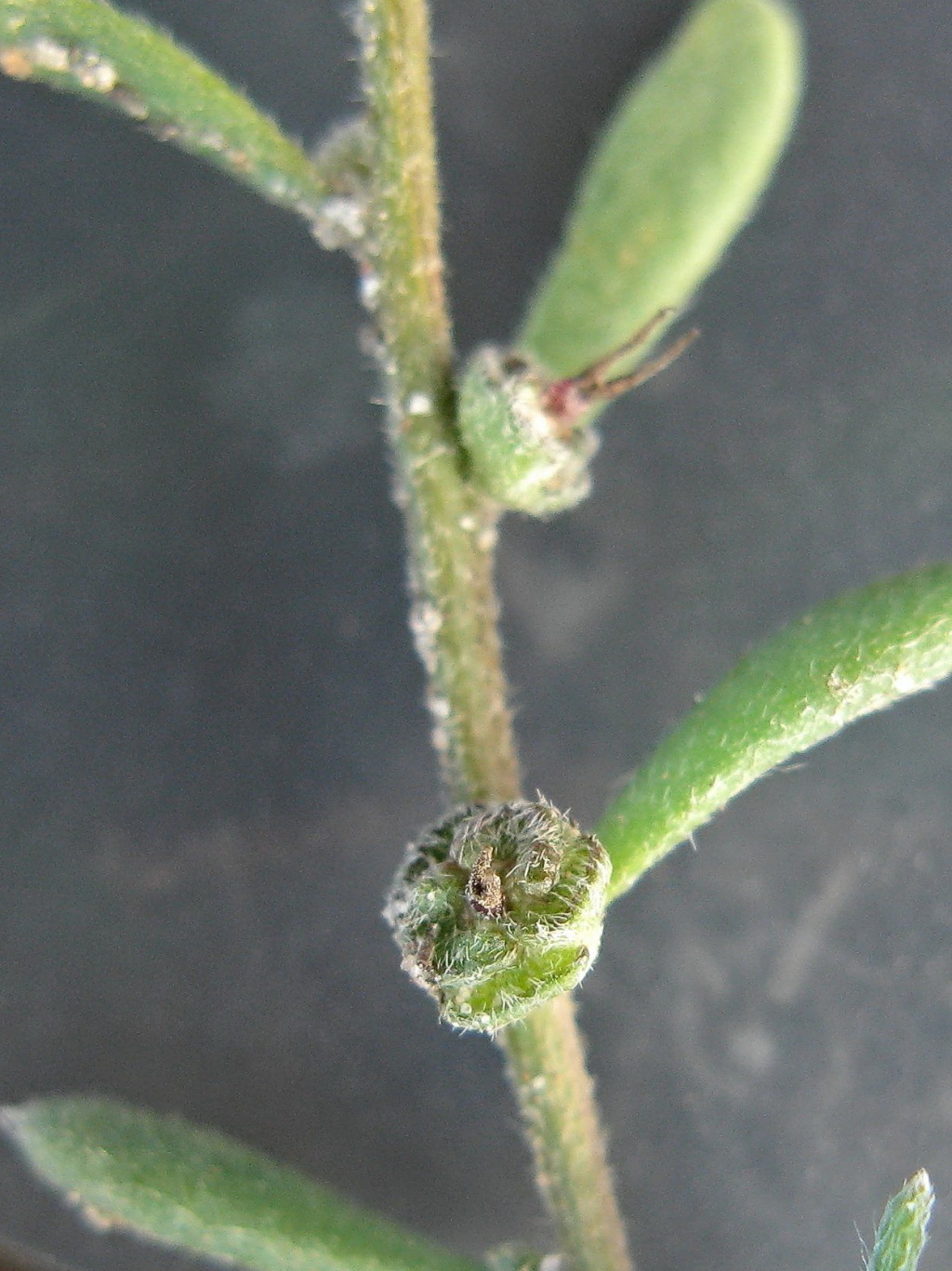Maireana enchylaenoides
(F.Muell.) Paul G.WilsonDecumbent or weakly erect perennial to c. 30 cm high; strongly taprooted; branches variably pubescent, to c. 30 cm long. Leaves alternate, linear to narrowly obovate, 5–20 mm long, pubescent to subsericeous. Flowers bisexual, sometimes subtended by a pair of small bracteoles, the lobes densely and shortly pubescent. Fruiting perianth 3.5–5 mm diam., blackening on drying, flat or slightly convex at apex; tube 2–3 mm diam., thin-walled, broadly tapered to base, obscurely 10-ribbed; wings 5, 2 usually spreading from slightly above others, broadly lunate to semicircular, overlapping, the margin incurved and usually thickened; radicular slit not apparent. Fruits mostly Oct.–Jan.
LoM, MuM, Wim, VVP, VRiv, MuF, GipP, OtP, Gold, CVU, GGr, DunT, NIS, HNF. Also WA, SA, Qld, NSW. Not uncommon on heavier, loamy soils of north-west Victoria, occasional in the Bendigo and Shepparton areas, and with a few isolated occurrences in low-rainfall zones bounded by Bacchus Marsh, Werribee and Melbourne.
Plants are often infected by an organism which causes the production of cottony galls to 1 cm diam. or more in the upper axils.
Walsh, N.G. (1996). Chenopodiaceae. In: Walsh, N.G.; Entwisle, T.J., Flora of Victoria Vol. 3, Dicotyledons Winteraceae to Myrtaceae, pp. 129–199. Inkata Press, Melbourne.
 Spinning
Spinning



